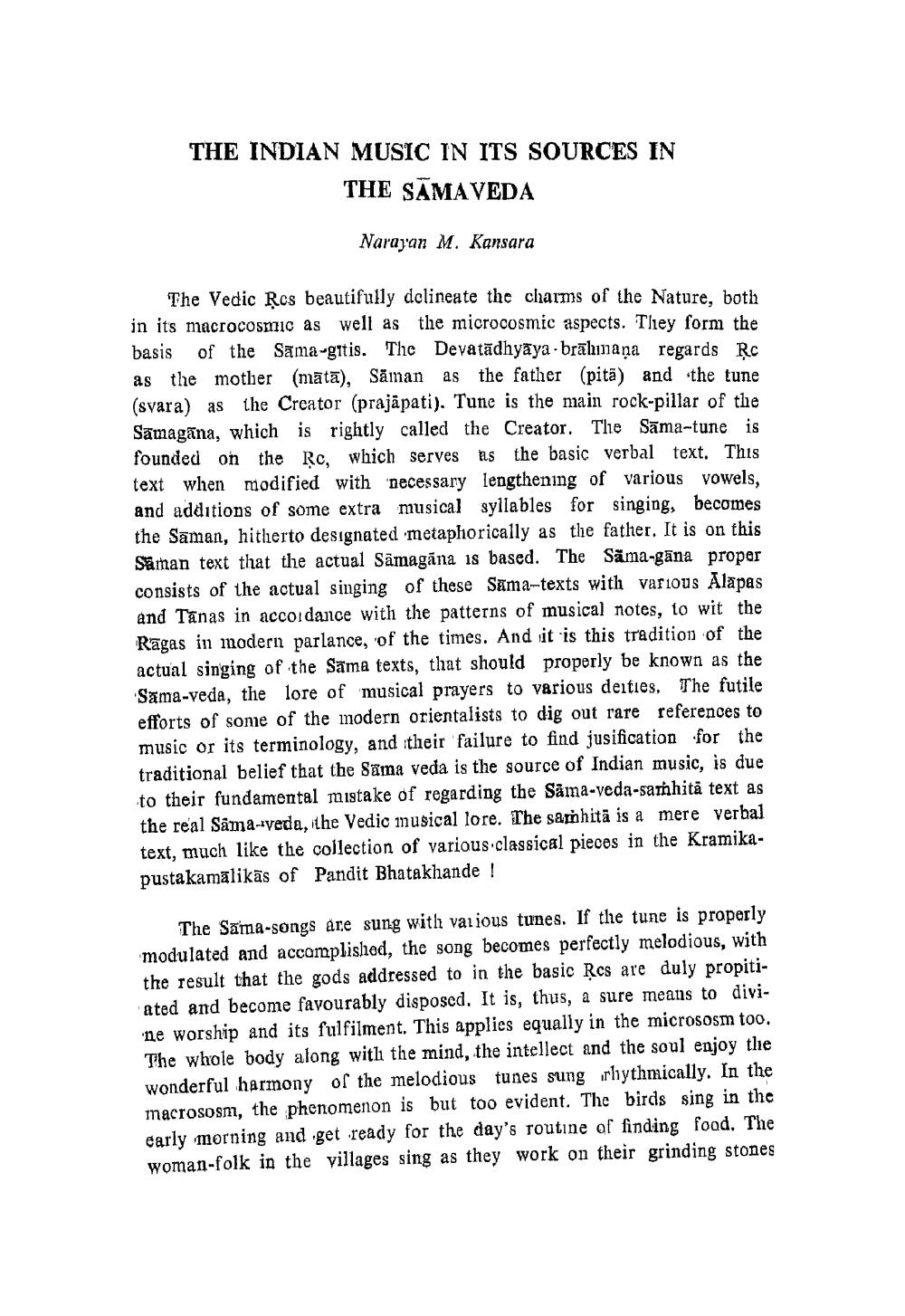________________
THE INDIAN MUSIC IN ITS SOURCES IN
THE SAMAVEDA
Narayan M. Kansara
The Vedic Rcs beautifully delineate the charms of the Nature, both in its macrocosmic as well as the microcosmic aspects. They form the basis of the Sama-gitis. The Devatadhyaya - brahmana regards Rc as the mother (mata), Saman as the father (pita) and the tune (svara) as the Creator (prajapati). Tune is the main rock-pillar of the Samagana, which is rightly called the Creator. The Sama-tune is founded on the Rc, which serves ns the basic verbal text. This text when modified with necessary lengthening of various vowels, and additions of some extra musical syllables for singing, becomes the Saman, hitherto designated metaphorically as the father. It is on this Saman text that the actual Samagana is based. The Sama-gana proper consists of the actual singing of these Sama-texts with various Alapas and Tanas in accordance with the patterns of musical notes, to wit the Ragas in modern parlance, of the times. And it is this tradition of the actual singing of the Sama texts, that should properly be known as the Sama-veda, the lore of musical prayers to various deities. The futile efforts of some of the modern orientalists to dig out rare references to music or its terminology, and their failure to find jusification for the traditional belief that the Sama veda is the source of Indian music, is due to their fundamental mistake of regarding the Sama-veda-samhita text as mere verbal the real Sama-veda, the Vedic musical lore. The samhita is a text, much like the collection of various classical pieces in the Kramikapustakamālikās of Pandit Bhatakhande !
The Sama-songs are sung with various tunes. If the tune is properly modulated and accomplished, the song becomes perfectly melodious, with the result that the gods addressed to in the basic Res are duly propitiated and become favourably disposed. It is, thus, a sure means to divine worship and its fulfilment. This applies equally in the micrososm too. The whole body along with the mind, the intellect and the soul enjoy the wonderful harmony of the melodious tunes sung rhythmically. In the macrososm, the phenomenon is but too evident. The birds sing in the early morning and get ready for the day's routine of finding food. The woman-folk in the villages sing as they work on their grinding stones




